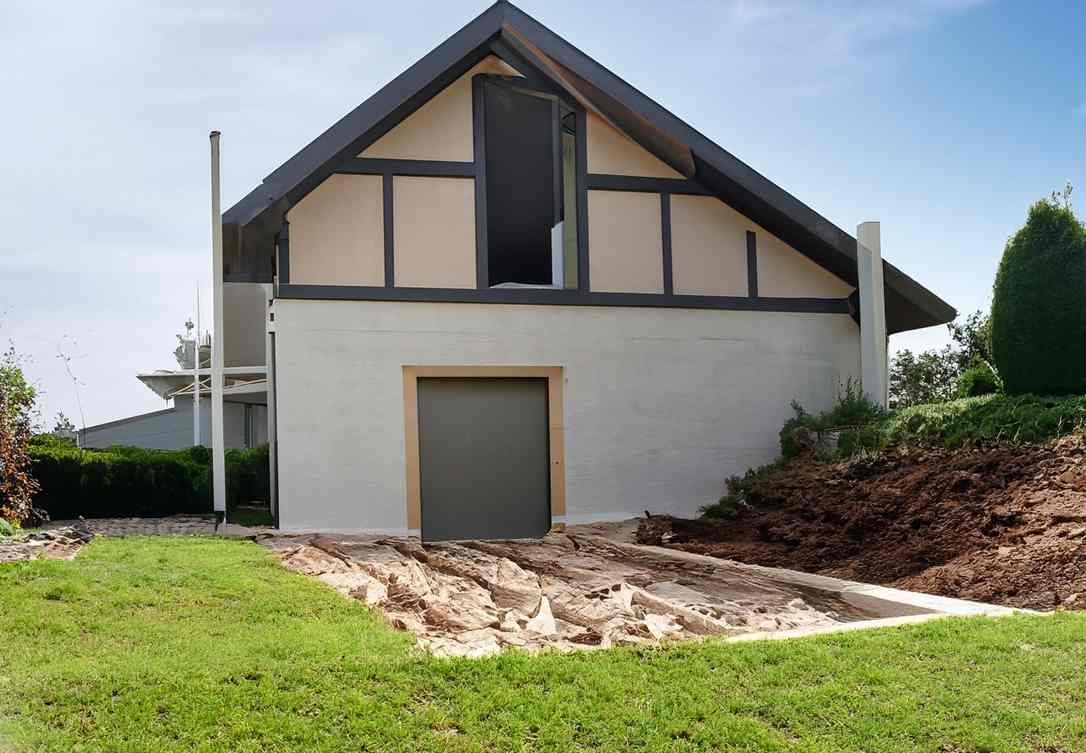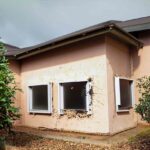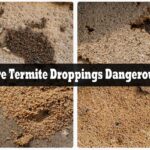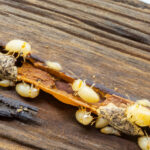Aging wood and past threats: How Can I Tell If It’s Old Termite Damage? Termites are a stealthy but powerful enemy in your home’s fight against nature. The problem is spotting termite damage and calculating its age. Imagine finding signs in wood fibers and structural features to determine these covert invaders’ age. We’ll understand the indications that indicate a former termite infestation or a current danger in this tutorial. We explore termite damage, from abandoned mud tubes to wood textures, to help you protect your home.
How Can I Tell If It’s Old Termite Damage?
There are many techniques to determine if termite damage is recent or ancient.
- Search for live termites. Searching for live termites is the best technique to determine whether there is a termite infestation that is active. Termite workers are tiny, 1/8-inch-long, creamy-white insects. They are often discovered in warm, wet sections of the house including the kitchen, crawl space, and basement.
- Look out for mud tubes. To go from their nest to their food supply, termites build mud tubes. These pencil-sized tubes are constructed from saliva and dirt. They are often discovered in wet regions, such as the vicinity of windows and doors.
- Search for frass. Termite droppings is referred to as frass. It is a little, sawdust-like substance that is often discovered next to mud tubes or other indicators of termite activity.
- Inspect the wood for damage. Given that termites consume wood, if you discover any mushy, spongy, or hollow wood, it is likely that termites have been present there.
Here are some other guidelines for determining the age of termite damage:
- The damage is discolored or smells musty. The wood may get discolored or begin to smell musty as a result of termite attack. This is due to the compounds that are released by termites when they consume the wood.
- The destruction is in a freshly renovated area. It’s likely that termite damage was detected during the renovation of your house if you’ve just finished it.
- The damage is in a place where dampness is not a problem. Termites need moisture to exist, hence regions without access to moisture are not likely to have termites present.
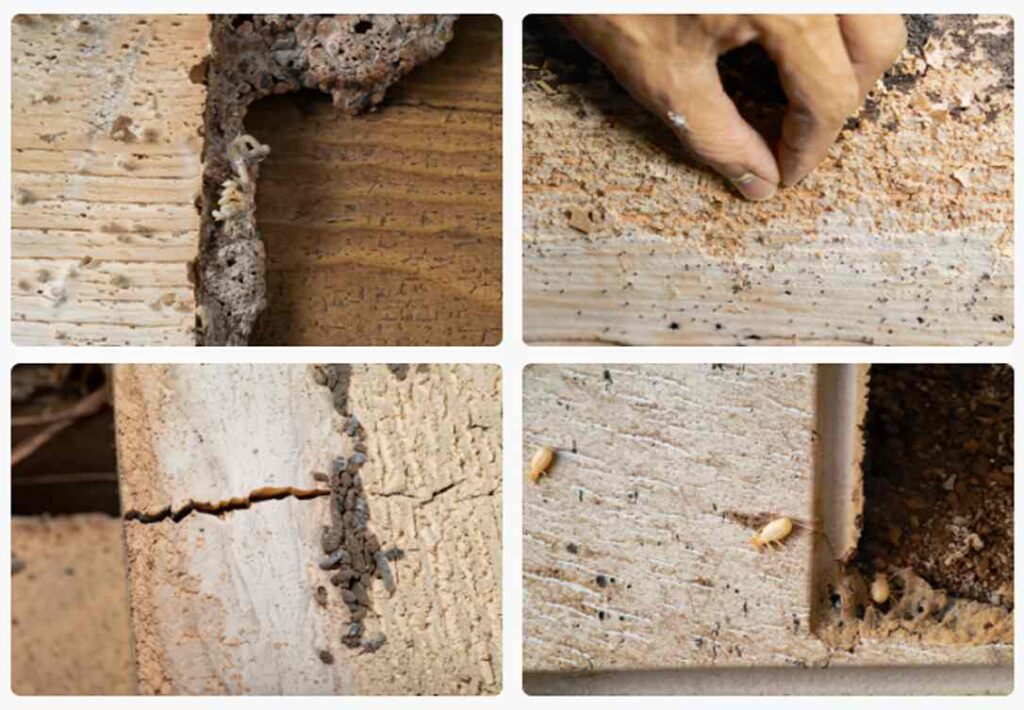
Differentiating Old and Recent Termite Damage
| Criteria | Old Termite Damage | Recent Termite Damage |
|---|---|---|
| Appearance | Faded, discolored wood; diminished smell | Fresh discoloration; potent, musty smell |
| Structural Changes | Soft, spongy wood; excavated appearance | Distinct tunnels, galleries, honeycombing |
| Mud Tubes | Abandoned or deteriorated | Active, intact tubes or newly repaired ones |
| Frass (Droppings) | Dry, aged appearance | Fresh, powdery texture |
| Wood Texture | Consistent with natural aging | Irregular, distinct termite patterns |
| Other Termite Activity Signs | Absence of live termites, frass, or tubes | Presence of live termites, active tubes |
| Environmental Factors | Wood condition consistent with aging | Wood condition inconsistent with aging |
Factors Influencing Termite Damage Identification
| Factors | Impact on Identification |
|---|---|
| Wood Hardness | Harder woods: Indicate old damage |
| Wood Density | Denser woods: Indicate old damage |
| Natural Wood Resistance | Resistant woods (e.g., cedar, redwood): Indicate old damage |
| Moisture Levels | Moist environment: May indicate recent damage due to attraction of termites |
| Temperature | Warm climate: May indicate recent damage |
| Type of Wood | Susceptible wood types: May indicate recent damage if present |
| Other Pest Activity | Presence of other pests (e.g., carpenter ants): Indicate potential termite presence |
Myths About Old Termite Damage
| Myths | Reality |
|---|---|
| Termite Damage Visibility | Not always visible; can be hidden |
| Harmlessness of Old Damage | Old damage can weaken structure |
| DIY Repairability of Termite Damage | Professional repair always recommended |
| Cost of Repair | Varies; timely repair is usually cost-effective |
What are the signs that suggest termite damage is historic rather than current?
Discolored or musty termite damage suggests history. Termite discoloration and smells fade over time, making damage dating difficult. If the damage is in a freshly renovated location, it may have been there before. Dry areas are unlikely to have active termites, although past damage may remain. It’s more likely that the damage was caused by a former infestation if there are no live termites, mud tubes, or frass.
Are there specific characteristics that differentiate old termite damage from recent damage?
| Characteristics | Differentiating Old Termite Damage from Recent Damage |
|---|---|
| Discoloration or musty smell | Chemicals released by termites fade over time |
| Recent remodeling | Damage discovered during renovations |
| Lack of moisture exposure | Unlikely termites active in non-moist areas |
| Absence of other termite signs | Old damage more likely if no live termites, mud tubes, or frass present |
| Soft, spongy, or excavated wood | Potential termite activity, but could also be caused by rot or water damage |
| Cracked or broken mud tubes | Indicates recent termite activity due to disruption |
| Fresh, powdery frass | Recent termite activity if frass is newly generated |
What are the visual indicators that help determine if termite damage is from a past infestation?
Discoloration or a musty smell from termites’ compounds produced during wood consumption might indicate a former infestation. In freshly renovated places, damage may have been identified or overlooked. If termites were present, damage may remain in non-moist conditions. Soft, spongy, or excavated wood may indicate termite activity, although it might also represent rot or water damage. Mud tunnels used by termites for travel may indicate recent upheaval. Conversely, dried and old frass, termite droppings, may suggest inactivity.
Can the color and texture of damaged wood provide clues about the age of termite activity?
Damaged wood’s color and texture may indicate termite activity age, although fading and other reasons can obscure these signs. Wood discolors from termite attack, turning it gray or brown. Soft, spongy wood may also show pitting and excavation by termites. Broken wood smells musty because termites emit compounds after eating. Detecting such signals requires skilled scrutiny. Older wood is more discolored and tougher, and susceptibility varies by wood type. Moisture and sunshine can affect wood’s look and texture.
Are there any non-visual cues that can help me determine if termite damage is old or recent?
Auditory, olfactory, and tactile signals may help determine termite damage age. Termites consume wood, making a clicking sound within walls and wooden constructions. Carpenter ants and other pests make this sound. The release of compounds by termites during wood consumption may cause a musty smell. This aroma may be mistaken for mold or mildew, requiring expert evaluation. Wood destroyed by termites feels mushy and spongy when tapped. This texture may also result from decay or water damage. A expert assessment is essential for clarity.
What role does the surrounding environment play in gauging the age of termite-related destruction?
The environment’s impact on termite-related destructive age is complex. Rain-prone or leaky environments are more likely to attract active termites since termites need moisture to survive. Termites like warmth, therefore cooler areas may have less termite activity, suggesting earlier damage. Different woods are more susceptible to termite attack, such as pine. Carpenter ants, which typically accompany termites, may also provide insights. All these parameters help determine the age of termite-related devastation in an area.
Are there professional methods to accurately date termite damage in a structure?
Professional procedures can date termite damage in a building. Termite DNA analysis uses frass or other samples to identify species and quantify termite activity. Radiocarbon dating checks damaged wood samples for carbon-14, which decays over time and might reveal when the wood was injured. Termite bait stations infect termites with a fungus using appealing bait, and the quantity of dead termites indicates termite activity. These approaches enable specialists accurately determine termite damage age.
How can I use historical records or previous inspections to determine the age of termite damage?
Focus on these factors to identify termite damage age using past documents or inspections: Check inspection records for past inspection dates. The inspection date should be included in these reports to estimate damage age. These reports should include describe termite damage, including its nature and amount. Photos of damage taken during inspections are important. These photographs show wood quality, mud tubes, and other termite activity, helping determine the damage’s age.
Can the presence of abandoned termite mud tubes indicate that the damage is old?
Yes, abandoned termite mud tubes indicate previous termite damage. Termites build pencil-sized mud tubes to secure their nest and food supply. When these tubes are abandoned, termites have moved on. Even if there are no active termites, a professional examination is necessary to confirm the infestation. Discolored or musty-smelling wood is another sign of past termite damage, because termite poisons dissipate with time. However, subsequent remodeling may have revealed previously undetected damage. Before infestations, areas without dampness might nevertheless show harm. The lack of termite activity, such as live termites, mud tubes, or frass, suggests the damage is ancient.
Are there instances where old termite damage may still pose a threat to a building’s integrity?
There are cases when ancient termite damage might compromise a structure. Even if termites are gone, their damage may have made the building more prone to further deterioration. Extended termite damage can weaken the structure to the point of collapse; damage to critical areas like foundations or beams can compromise structural stability; failure to repair the damage allows ongoing deterioration; and improper treatment can invite new termite activity and a renewed infestation. Restoring past termite damage is crucial to the building’s stability.
How can I differentiate between natural wood aging and wood damage due to termites over time?
It may be difficult to distinguish between natural wood aging and termite damage, especially when the damage is minor. Consider these tips to differentiate: Natural wood aging causes temperature and humidity fractures and shrinkage, resulting in gaps and splits. Environmental elements like sunshine may discolor. However, termite damage may show tunnels, galleries, or a honeycomb-like appearance. Termite mud tubes, frass, or soft, spongy wood may also indicate termite activity. Comprehensively assessing these characteristics may help separate the two causes.
Are there technological tools or tests available to assess the age of termite damage accurately?
Technological instruments and testing can accurately determine termite damage age. Termite DNA analysis from frass or other materials identifies species and estimates activity timeframes. Carbon-14 decays over time, therefore radiocarbon dating uses it to identify when wood was destroyed by termites. Appealing bait at termite bait stations infects termites with a deadly fungus. These stations measure termite population activity by counting dead termites. These new technologies accurately date termite damage.
What role does wood hardness or density play in identifying old termite damage?
Wood hardness and density can detect previous termite damage. Termites are less likely to munch through harder woods. Hard wood damage is more likely to be ancient since termites have a hard time producing it. Denser woods have fewer gaps or holes for termites to enter, therefore damage is more likely to be aged. Cedar and redwood, which resist termites, are also less likely to be damaged. Thus, damage in resistant woods implies older damage. Wood qualities including hardness, density, and inherent resistance may help estimate termite damage age.
Are there common misconceptions about recognizing old termite damage that I should be aware of?
There are various myths about identifying historical termite damage. One myth is that termite damage is always obvious; it may be hidden behind walls or buildings. Another myth is that ancient termite damage doesn’t threaten a building; it may weaken it and allow further damage. It is also a myth that termite damage may be fixed without professional help. Experts should analyze the damage and offer solutions. Lastly, termite damage repair rates vary by severity, and treating it quickly is usually less than fixing substantial, unmanaged damage. Understanding ancient termite damage better requires awareness of these myths.
Conclusion
Termite damage age requires a comprehensive examination of numerous parameters. Mud tunnels, which termites build for transit, may indicate historical activity, however abandoned tubes must be considered. Termite frass, which resembles sawdust, indicates recent termite activity. Soft, spongy wood or visible tunnels and galleries indicate termite activity, so inspect it. Older termite damage may cause wood discoloration and a musty smell. The wood’s age matters because fractures and shrinking might seem like termite damage. In doubtful circumstances, expert examination is best to determine damage kind and age.
- How do termite mounds help regulate temperature? - 7 January 2024
- 10 Effective Termite Control Methods That Actually Work - 4 January 2024
- How Long Does It Take for a Termite Mound to Form? - 21 December 2023
